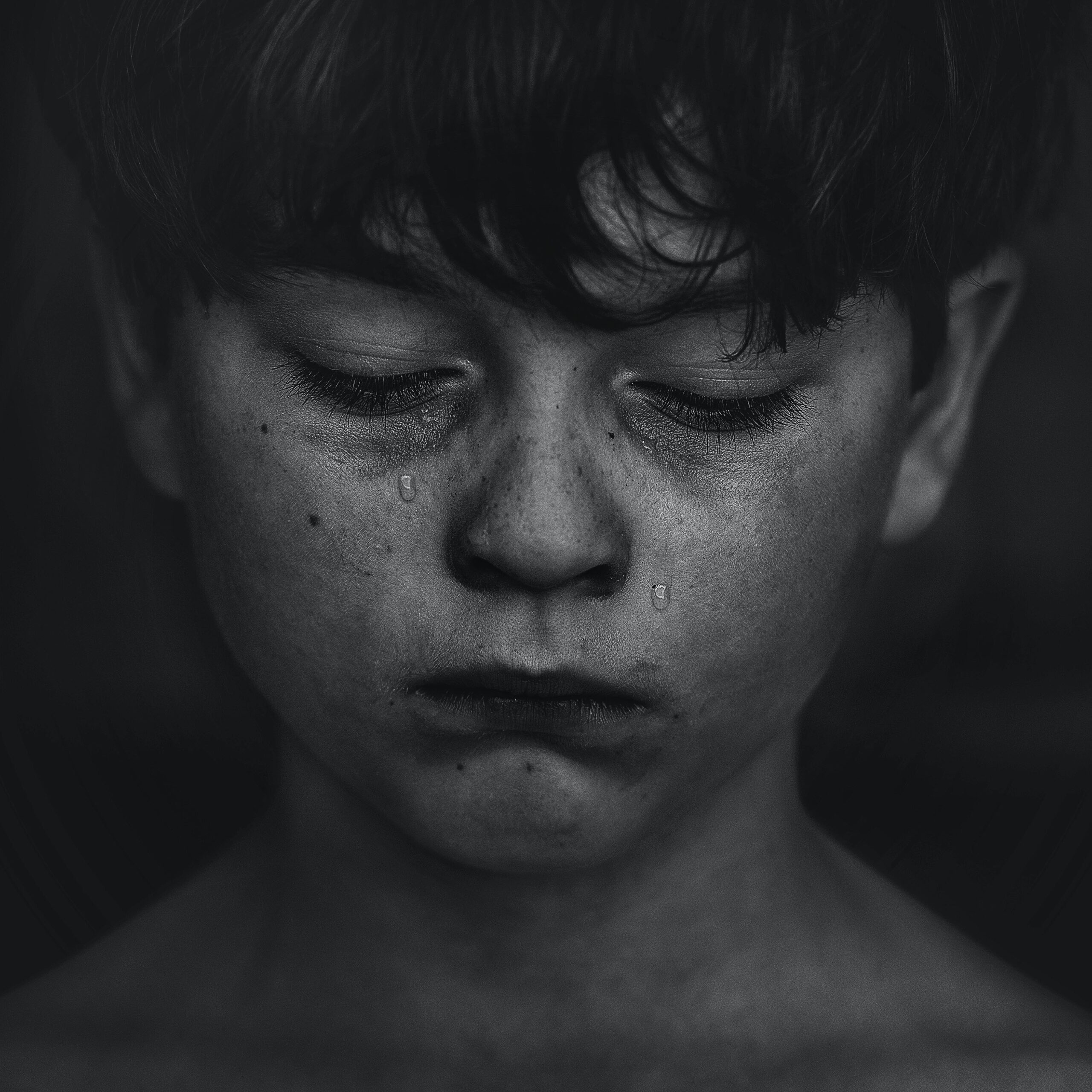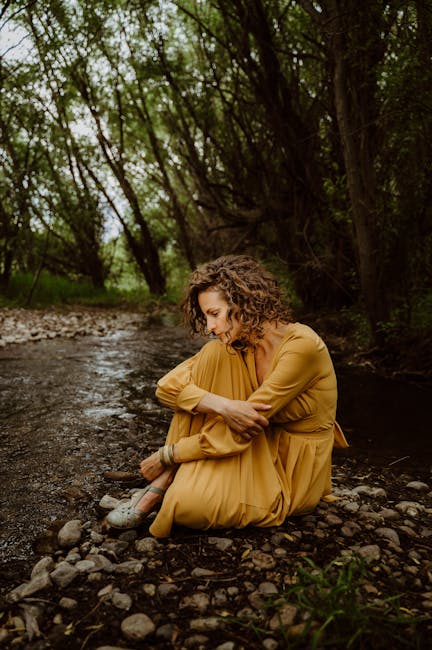
Holly*, a casting agent in Austin, Texas, had postpartum #depression with her first #child, Fiona, now 5 years old. Today, Holly takes medication to manage her #anxiety and #depression. But she also worries that #anxiety might someday affect her daughter — and her son, now 3.
Holly explains that Fiona could be shy and clingy. “[I] wasn’t sure if that was normal #kid #behavior or something else,” Holly says.
Then, there was what Holly now calls “an incident.” A few weeks into kindergarten this year, Fiona got hurt on the playground at recess and was sent to the #nurse.
“I think she was alone for a little bit, and then wasn’t allowed to go back to recess,” Holly recalls. “I think she felt very out of control, which then manifested as, ‘I don’t like the #nurse.’ Then she didn’t want to go to #school, and started regressing in several areas. She no longer wanted to go to cooking class, then dance class. Every day, going to #school became torture, screaming, crying. It took a while to calm her down,” she explains.
Holly and her husband talked to Fiona’s #teacher and to the #nurse. But after a couple of weeks, Holly conceded that she didn’t have the right tools to deal with the situation. She took Fiona to her pediatrician, who asked the #child a series of questions. Her #pediatrician then advised her mother: “She has some #anxietyissues.”
Holly got a referral to a #therapist and began taking Fiona to weekly visits. “The #therapist was fantastic with our daughter, and she was great with me. She gave me tools to help talk to my daughter and help me understand what was going on,” Hollys says. Holly and Fiona continued to see the #therapist for three months, and Fiona has made dramatic improvement with her #anxiety, Holly says.
Reflecting upon her own #childhood #mentalhealth, Holly recalls, “I hated kindergarten. I cried and cried and cried, and part of me wonders, What have I done to create this? Was she born this way or am I somehow making her crazy?”
#James Donaldson notes:
Welcome to the “next chapter” of my life… being a voice and an advocate for #mentalhealthawarenessandsuicideprevention, especially pertaining to our younger generation of students and student-athletes.
Getting men to speak up and reach out for help and assistance is one of my passions. Us men need to not suffer in silence or drown our sorrows in alcohol, hang out at bars and strip joints, or get involved with drug use.
Having gone through a recent bout of #depression and #suicidalthoughts myself, I realize now, that I can make a huge difference in the lives of so many by sharing my story, and by sharing various resources I come across as I work in this space. #http://bit.ly/JamesMentalHealthArticle
Order your copy of James Donaldson’s latest book,
Celebrating Your Gift of Life:
From The Verge of Suicide to a Life of Purpose and Joy
Are more #kids living with #anxiety today?
Holly isn’t alone. I interviewed several #parents who’ve lived with #anxiety, whose #children have also exhibited anxious #behaviors.
#Anxiety in #children is decidedly more proliferate now than it was a generation ago, says Los Angeles-based family #therapist Wesley Stahler. She adds that there are a lot of different factors stoking it, including genetics. “#Parents often come in and blame themselves for the genetic component,” Stahler says. But in reality, there’s more at play. “There’s a historical context, compared to when we were #kids,” she explains.
Add to that the tension over the political divide pre- and postelection, and #anxiety today seems to have become a widespread family issue. What’s even more important to know is that #anxietydisorders are the most common #mentalillness in the #UnitedStates.
#Anxiety is defined as the inability to tolerate discomfort, Stahler explains, and perceiving things that aren’t an actual threat as a threat. Stahler adds that 1 in 8 #children and 1 in 4 #adults have #anxiety. #Anxiety manifests in physiological and psychological ways, including stomachaches, nail biting, inflexibility, and difficulty with transitions.
People experience a fight-or-flight response to the perceived threat. Often #anxiety in #children is misdiagnosed as attention deficit, Stahler says, which can look like #kids who can’t sit still. Fidget spinner, anyone?
Rachel*, a Los Angeles-based fourth-grade #teacher, says she’s witnessed a significant uptick in #anxiety and #stress among her #students over the last five years.
As a result, Rachel has consciously changed her vocabulary and strategies for dealing with families.
“In the past, I would have used words like nervous, worried, preoccupied to describe how a #child might have been overwhelmed in the classroom over their grades or their perceptions of how others viewed them. Now, the word #anxiety is brought to the conversation by the #parent. #Parents report that their child cries, for days, sometimes, or refuses to participate, or cannot sleep,” Rachel explains.
Brooklyn-based #child #psychologist Genevieve Rosenbaum has seen an increase in #anxiety among her clientele over the years, too. Last year, she reports, “I had five middle schoolers, all in a row, all who had performance #anxiety about #school. They all had an inordinate amount of dread about applying to #highschool. It’s really striking. It seems to be so much worse than it was when I started practicing.”
Why are #kids so anxious?
The primary sources of #anxiety, Stahler says, are twofold: brain wiring and parenting. Put simply, some brains are wired with #anxiety more than others. As for the parenting component, there’s the genetic element.
#Anxiety goes back as far as three generations, Stahler says, and then there’s the modeling #parents are exhibiting for their #children, like obsessive use of hand sanitizer or preoccupation with germs.
Plus, thanks to increased “tiger parenting and overscheduling, #kids today have less time for play — and that’s how #kids work things out,” adds Stahler.
Ann, an organizational consultant in Portland, Oregon, who has a 10-year-old with #anxiety around #doctor and dentist visits as well as a 7-year-old with #socialanxiety, has tried to mitigate that by sending her #children to a Waldorf School, with limited media and ample time among trees.
“#Kids aren’t getting enough time out in nature. They’re spending too much time on devices, which changes brain structure, and our world today is a constant bombardment of senses,” says Ann. “There’s no way a sensitive #kid can navigate all the things coming at them all the time.”
Ann has a history of panic attacks and comes from a “long line of sensitive people,” she explains. She’s done much work on her own #anxiety — which has in turn helped her manage her children’s.
“When we were #kids, there wasn’t a language around this yet,” adds Ann. She’s begun, and maintains, that dialogue with her #children to validate their fears and help dispel them. “I know it helps my son to know he is not alone, that he is experiencing a real physical event [during #anxiety]. For him, that’s effective,” she says.
Lauren, a fashion stylist in Los Angeles, says she has sought and received much professional help for her 10-year-old son, who has #anxiety. At 3, he received a diagnosis of being on the autism spectrum. She says, regardless of environmental factors, her son may have always received that diagnosis. But at another time in history, he may have not received the same help he needed.
Like Ann, Lauren explains she’s always been sensitive. “My family’s reaction has always been, there she goes, overreacting again! They have since come to understand this is hardwired,” she says.
After last year with a new, inexperienced #teacher that “completely upended my son” — he spent a fair amount of time in the principal’s office after hiding repeatedly under his desk — Lauren’s family has employed various types of traditional and alternative therapies, including neurofeedback, as well as meditation and dietary changes. Her son is much better adjusted this year.
“I can’t make my #kid chill, but I can teach him coping mechanisms,” says Lauren. One day this year when her son lost his backpack, Lauren remembers it was “as if I had announced his entire family had been killed. I told him we could go to Target and get him a new one, but he was physically in a panic. Finally, he went into his room, played his favorite song on the computer, and came out and said, ‘Mom, I feel a little better now.’” That was a first, Lauren says. And a triumph.
Helping your #child cope with #anxietydisorder
After acknowledging that families’ issues are different, Stahler says there are basic coping tools she recommends for #parents whose #children show signs of or have received a diagnosis of #anxietydisorder.
Help with #anxiety
- Create daily rituals where you identify your children’s strengths.
- Identify bravery and acknowledge it’s OK to be afraid and doing something anyway.
- Reaffirm your family values. For example, “In this family, we try something new every day.”
- Find time to relax every day. Cook, read, or play a board game. Do NOT engage in screen time.
- Exercise regularly; Stahler insists 20 minutes of nonstop cardio can improve your mood.
- Seek professional help when needed with someone who can discuss whether medication might be appropriate for your #child.
For more help on #anxiety and #depression, visit the #Anxiety and #Depression Association of #America. Always seek professional help before beginning any treatment plans.
*Names have been changed to protect the privacy of contributors.

Liz Wallace is a Brooklyn-based writer and editor who’s been published recently in The Atlantic, Lenny, Domino, Architectural Digest, and ManRepeller. Clips are available at elizabethannwallace.wordpress.com.






